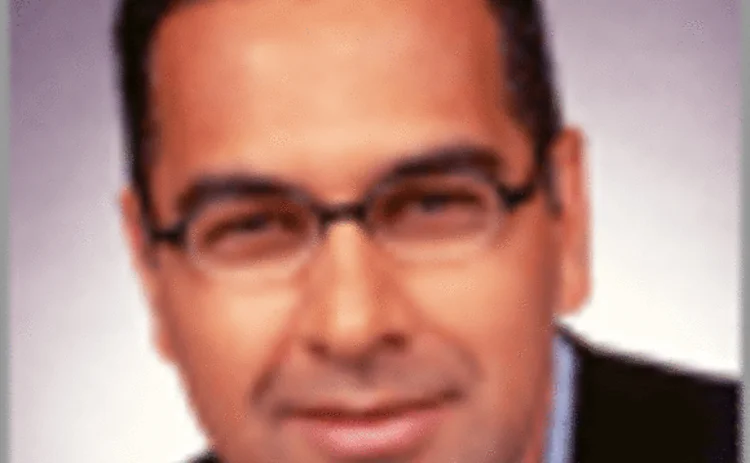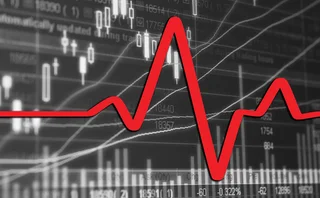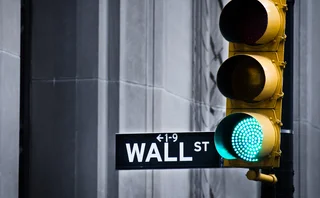
Sunil Hirani
The CEO and co-founder of credit derivatives e-trading platform Creditex talks to US Credit about the market-shaping effects of last year’s merger between iBoxx and Trac-x, and how a newly unified index has given rise to more widespread electronic trading of CDS

How has the merger of iBoxx and Trac-x into Dow Jones CDX in North America and Dow Jones iTraxx in Europe affected the credit default swap (CDS) market?
The merger of the competing index families has to be the most important development of 2004 in the CDS market. It was the defining event of 2004 for several reasons. Foremost, it clearly showed that major market participants were willing to work in cooperation to create a larger, more efficient market with unparalleled liquidity and depth for the benefit of the end investor.
Second, due to the concentration of market-making by the dealer community, certain indices enjoy liquidity and depth that has never been seen in the credit derivatives market. These indices are DJ CDX NA IG and DJ CDX NA HiVol in North America and DJ iTraxx Europe, HiVol and Crossover in Europe. Finally, the concentration of liquidity in the CDX and iTraxx index families has resulted in the implicit costs of trading (i.e. the bid-offer spread) to be reduced significantly. Today, the average bid-offer spread in DJ CDX NA IG, DJ CDX NA HiVol and iTraxx Europe and HiVol can be as low as ¼ to 1 basis point, whereas earlier in 2004 it would have been a multiple of that spread.
As a result of the massive increase in liquidity and reduction in the bid-offer spread, CDS indices are now being used as an efficient trading tool and not just a hedging instrument. Furthermore, CDS (not just indices) are more and more being perceived by the marketplace as a proxy for credit risk.
With significant progress being made in improving liquidity and depth along with reducing the transactions costs, what strides has the market made in terms of standardization?
Gone are the days when the terms of a credit default swap had to be negotiated on a deal-by-deal basis. The market has since made real progress in terms of standardization of documentation, reference entities and obligations, and automation.
l Documentation. The events of 2001–2002, where we witnessed unprecedented credit defaults and downgrades, unintentionally ended up being a test of the viability, enforceability and usability of the credit default swap contract. The tests were passed with flying colors. Those events also served to help fine-tune the documentation to the point today where one needs only to negotiate the spread of a plain vanilla credit default swap transaction given the notional and maturity of the transaction. This is quite a significant achievement.
l Reference entities and obligations. In previous years, there was no centralized repository of reference entity information like we have today in the shape of Markit’s RED (Reference Entity Database). In order for market participants to scale, participants can ill afford to keep separate databases of reference entity information. Most major market participants have already adopted RED, as has the leading e-trading platform for credit derivatives. You can’t keep looking up in separate databases the most fundamental piece of information for a credit derivatives transaction. Luckily, we don’t have to anymore with the advent of RED.
l Automation. There is now an Isda-sponsored standard for electronically transmitting the details of single-name credit default swap and credit index transactions. This standard protocol is called FpML (Financial products Markup Language). The major credit derivatives market participants have cooperated on its development and have moved quickly to adopt it. FpML provides the foundation that is allowing us to build systems and services that further reduce transaction costs and operational risk. In order for the market to continue to continue to grow, it is very important that systems and service providers ‘speak’ FpML.
How have the proliferation of indices and the strides in standardization affected the development of electronic trading in credit derivatives in the dealer market?
With significantly increased liquidity and decreased bid-offer spreads in the indices, the margin per trade went down on a per transaction basis. With margins going down, it made for the right environment to introduce e-trading and Creditex lowered the explicit costs of trading an index from a lofty €2,500 to a more reasonable €500 for a standard €25 million index trade. Think about it, the explicit cost of trading this instrument was a ¼ basis point (€2,500 on a €25 million trade) and the bid-offer today is a ¼ basis point. It was untenable that the dealers should pay out 100% of the bid-offer to a voice broker to trade the index. The lower cost made many people open to the idea of electronically trading credit indices.
The standardization of all the terms of a plain vanilla CDS has helped make trading of single names possible electronically. In order to trade electronically, all the terms of the transaction must be transparent to the parties involved in the transaction. So standardization has laid the foundation for making e-trading of single names possible. The combination of the above has enabled dealers to trade over $150 billion in notional electronically on the Creditex platform since the second quarter of 2004.
Also, our assumption going into the second quarter of 2004 was that only indices would trade electronically. At the beginning of the second quarter 100% of the electronic trades on Creditex were indices, whereas at the close of 2004 about 70% of trades on Creditex were single-name credit derivatives. In Europe, 100% of the single names that comprise the iTraxx Europe index can now be traded electronically.In fact, the rate of adoption of e-trading is significantly further ahead in Europe than it is in North America.
We also ended 2004 with our European clients asking for e-trading capabilities for emerging markets CDS as well as standardized options on indices. It is now not uncommon to trade Russia, Turkey and Ukraine single-name default swaps as well as iTraxx options electronically. This we did not anticipate.
Has the overarching market environment of the past year—one of low volatility and low spreads—been a help or a hindrance to the development of electronic trading and the volume of trading on electronic trading platforms?
The low volatility and low spread environment that characterized most of 2004 was a great help to the introduction of electronic trading of credit derivatives. The relatively calm and stable environment made it more palatable for traders to give e-trading a chance. But I am also of the opinion that it’s 99% psychological and a matter of comfort. Liquidity will migrate to electronic or voice platforms depending on the comfort level of the traders and there is no reason why e-trading cannot happen in fast-moving markets. We have seen several instances of fast-moving and volatile markets around times of Fed announcements and the volatility surrounding the Ukraine elections where the e-trading platform was extremely effective in helping participants efficiently transfer credit risk. Given a proper and fair chance, e-trading can also be helpful in fast-moving markets.
And on a related note, how do electronic platforms help investors search for yield in such a low spread environment?
In two ways. First, in a low spread and low bid-offer environment, e-trading helps participants lower their explicit transaction costs. Transaction costs become more and more important as the absolute level of spreads declines and as the bid-offer spreads decline. If a transaction can be executed at a lower explicit and implicit cost, then a higher percentage of the spread gets put in the hands of the investors.
Second, in a low spread environment, the profitability and the margins associated with low spread credits may be too minor (or even negative on a fully allocated basis) for brokers and market-makers to execute. In other words, those individuals responsible for executing transactions will not have the proper incentives to work on those transactions and hence investors might not be able to get efficient access to those credits. The intermediaries’ attention will tend to get focused on higher-margin transactions. On an e-trading platform, GM 10-year default swap trading at 380 basis points gets the same attention as the BNP five-year senior default swap trading at 9 basis points. As a result, more of the spread stays in the hands of those taking the actual risk.
An important point unrelated to e-trading is that in a low spread environment, investors will seek out yield by considering credit risk in high-yield, crossover and emerging markets credits. The CDS market has developed quite a bit in these areas over the past year and these areas are seeing considerably more activity. We would expect that to continue into 2005.
What technological and market developments do you feel will make the biggest impact on the CDS market in 2005?
First, e-trading between dealers and clients will start to take a foothold in 2005. The success last year of CDS e-trading in the European inter-dealer market has shown that e-trading is viable and allows for a more efficient trading and post-trade process.
Second, we will start seeing significant development in the automation of processing credit default swaps. It’s just too expensive to process a plain vanilla transaction and the operational risk associated with manual or semi-manual processing is too great. One report by a consultancy firm states that it can cost up to $390 for some financial institutions to process a credit default swap paper confirmation. I believe all the elements are in place to significantly lower the processing costs and lower the operational risks for the entire industry.
Last, but not least, will be the launch of tradeable, credible, consistent and market-supported credit spread fixings. Tradeable credit spread fixings (TCSFs) akin to BBA Libor fixings in the interest rate swaps market are a necessary next step in the evolution of the credit derivatives market. Fixings will help build confidence not only among existing and new participants but also amongst regulators and central banks. Furthermore, it is a precondition for the development of second-generation products including constant maturity CDS, range accruals and a series of other applications. Where would the interest rate swap market be without the BBA Libor fixings? TCSFs are the right next step into the future of this market.
Only users who have a paid subscription or are part of a corporate subscription are able to print or copy content.
To access these options, along with all other subscription benefits, please contact info@risk.net or view our subscription options here: http://subscriptions.risk.net/subscribe
You are currently unable to print this content. Please contact info@risk.net to find out more.
You are currently unable to copy this content. Please contact info@risk.net to find out more.
Copyright Infopro Digital Limited. All rights reserved.
You may share this content using our article tools. Printing this content is for the sole use of the Authorised User (named subscriber), as outlined in our terms and conditions - https://www.infopro-insight.com/terms-conditions/insight-subscriptions/
If you would like to purchase additional rights please email info@risk.net
Copyright Infopro Digital Limited. All rights reserved.
You may share this content using our article tools. Copying this content is for the sole use of the Authorised User (named subscriber), as outlined in our terms and conditions - https://www.infopro-insight.com/terms-conditions/insight-subscriptions/
If you would like to purchase additional rights please email info@risk.net
More on Credit markets
Liquidnet sees electronic future for grey bond trading
TP Icap’s grey market bond trading unit has more than doubled transactions in the first quarter of 2024
Single-name CDS trading bounces back
Volumes are up as Covid-driven support fuels opportunity for traders and investors
Podcast: Richard Martin on improving credit migration models
Star quant proposes a new model for predicting changes in bond ratings
CME to pass on Ice CDS administration charges
Clearing house to hike CDS index trade fees from July after Ice’s determinations committee takeover
Buy side fuels boom in single-name CDS clearing
Ice single-name CDS volumes double year on year following switch to semi-annual rolls
Ice to clear single-name bank CDSs from April 10
US participants will be able to start clearing CDSs referencing Ice clearing members
iHeart CDS saga sparks debate over credit rules
Trigger decision highlights product's weaknesses, warns Milbank’s Williams
TLAC-driven CDS index change tipped for September
UK and Swiss bank Holdco CDSs likely inclusions in next iTraxx index roll, say strategists







